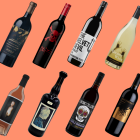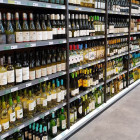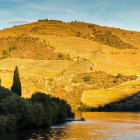As the Northern Hemisphere harvest looms, the 2021 vintage in France may deliver one of the smallest yields in decades. The French Ministry of Agriculture is forecasting a production decline of 24% to 30% across the country compared to 2020 levels. A drop of this level would mean that wine production in France in 2021 would sink to its lowest output since 1970.
The expected low yields stem from the devastating early April frosts that hit almost 80% of French wine regions (as well as other parts of Europe) and gave the world shocking photos of producers burning torches and candles through the night in an effort to minimise the damage. A wet summer in many regions subsequently brought mildew damage, further reducing expected yields.
Impact on fine wine market
While the Ministry of Agriculture forecasts are for the French wine industry as a whole, the fine wine market segment should also prepare for a smaller 2021 vintage. Even though it is not yet clear how specific regions and grape varieties will fare, both Bordeaux and Burgundy suffered with Rhone and Champagne also experiencing losses.
It remains too early to accurately assess how the yields will impact prices of the future 2021 wines. Wine quality and other market factors at the time of the various releases will likely have a larger impact than pure volumes levels.
Existing vintages could experience upward price pressure in the near to medium term as expectations of low volumes in the future could increase competition for recent releases. This could include those already in physical form in the market as well as the more recent 2019 and 2020 Bordeaux en primeur (EP) wines and upcoming Burgundy 2020 releases early next year. Many of the recent Bordeaux 2020 EP releases saw significant price jumps compared to the previous year, but a small 2021 crop could help prices continue to rise in the secondary market.
A boost to demand for existing French wines could add to an ongoing price rally that all French regions are currently enjoying to different degrees. The global economic recovery and the suspension of US tariffs on many European wines earlier this year has lifted the fortunes of French fine wine markets. The Liv-ex Burgundy 150 and Champagne 50 regional indices are already up 9.8% and 8.5%, respectively this year (through 31 July), the highest two regional growth figures.
Regional specifics not yet known
Early indications point to Chardonnay among the worst hit. Frosts reduce yields when they come after spring budburst and kill the young vine shoots. Chardonnay is an early-budding grape variety, which makes it more susceptible. This could mean notable drops in Burgundy white wine and Champagne yields, but specifics will not be known for some time. The Champagne market is also insulated by the fact the vintage Champagne is not produced every year and producers can adjust supply of non-vintage Champagne with reserves from previous years.
As for Bordeaux, the Ministry’s report noted frosts in April and again in May impacted the region, but the degree varied across different vineyards. Typically, higher ground or close proximity to the river can reduce frost risk.
The quality of the wine that does emerge from the 2021 vintage will also form a key factor. Although production declines do not necessarily mean lower quality, it is worth noting that Bordeaux’s 2013 and 2017 vintages saw lower yields due to weather events and were also deemed inferior to the years before and after.
Beyond France
As mentioned, France wasn’t alone in suffering weather damage this year. Italy’s Piedmont and Tuscany both suffered April frosts along with France. More recently, flooding in Germany inundated vineyards, specifically those in the Ahr Valley, a key region for quality Spätburgunder (Pinot Noir). The impact from climate change can lead to more disruptive weather for the wine industry. Although some cooler climate regions might benefit from warmer growing seasons, all regions can suffer from extreme or unusual weather patterns. Both investors and wine collectors will increasingly have to take these risks into account when assessing the market outlook.






